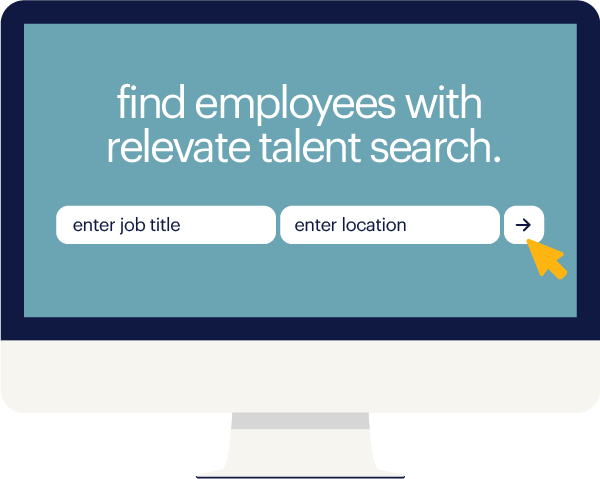COVID-19 continues to redefine and transform the world of work in dramatic ways — not all of them structural. For example, along with the massive shift to remote work have come significant new behavioral norms, as well. And these emerging behavioral trends will have far-reaching implications, including:
-
what type of engagement employees expect from their employers going forward
-
how companies can measure and monitor productivity — without escalating burnout risks
-
how organizations connect and manage their remotely distributed teams
All of which foreground one key fact: COVID-19 changes in behavioral norms are taking place at the critical nexus of employee engagement and workforce management. What, in that context, is a forward-thinking company to do? Can they even get ahead of these shifts — and so leverage these new behaviors to strategically power their talent acquisition strategies in the weeks, months and years ahead?
With searches including the keyword “remote” soaring to all-time highs on job boards, and companies like Twitter granting employees the option to continue working from home “forever," action appears to be very much the order of the day. So let's begin by diagnosing the disorderly state of engagement in our still new but rapidly normalizing "new normal." Next, we'll turn to three strategies that just might help employers turn the tide.
to disconnect or not to disconnect: that is no longer the question
There are obvious engagement challenges — logistical, interpersonal, structural, technological — that spring to mind where remotely distributed workforces are concerned. But the latest burnout-related stats suggest that something more than these straightforward challenges is at play right now. For example:
-
According to data from Randstad’s Workmonitor COVID-19 survey, 61 percent of employers said that they expect their staff to be available outside of regular working hours — an increase of 3.8 on the benchmark from the previous year.
-
Meanwhile, internal company data at some organizations shows that more employees are working through lunch and logging on to tackle work tasks late into the night than ever before.
-
Recent surveys show 51 percent of employees reporting symptoms of burnout in May (already the majority of employees). By the end of June, the figure had leapt to 69 percent. Yikes!
So burnout — a "recognized occupational phenomenon" — is truly rampant right now. (Burnout, if you're interested, is defined as "a syndrome characterized by high emotional exhaustion, high depersonalization and a low sense of personal accomplishment from work.”)
in fact, it might be more accurate to call it an intensification of trends that were clearly visible before the crisis hit.
Yet, in some ways, what we're seeing with burnout today isn't an altogether new normal. In fact, it might be more accurate to call it an intensification of trends that were clearly visible before the crisis hit.
Consider, for example, that well before the arrival of the novel coronavirus, the majority of millennial employees reported feeling "obligated" to respond to work emails outside of normal working hours. Across all age groups, what's more, 42 percent of employees said they were accustomed to checking in with work while on vacation (and more than one in four said they would feel guilty if they used up all of their vacation time).
So burnout risk was climbing prior to COVID-19. But what's undeniable is that COVID-19 has constituted a tipping point for burnout risks. And in light of that troubling fact, let's turn to some strategies companies can use to fix it.
the learning edge: new workforce management strategies for our new normal
It's difficult to imagine, at least from the vantage of the present, that nearly half of employers cited "flexible attire" as a noteworthy perk they offered to employees not so long ago. With the onset of the pandemic, of course, the appeal of choosing your own apparel seems quaint or absurdist. Today, employees are taking Zoom calls in business-casual shirts, and pairing them with pajama pants — and that's on a good day.
How, then, are employers today attempting to empower their remote teams in flexible work arrangements, while also making a dent on engagement and burnout as well?
today, employees are taking Zoom calls in business-casual shirts, and pairing them with pajama pants — and that's on a good day.
Adjusting compensation is one answer. In fact, the majority of employers say they are re-evaluating and modifying their compensation packages in response to the unique business environment inaugurated by our ongoing pandemic, according to data from Deloitte.
But this may prove shortsighted. For one, it's hard to see how compensation alone is going to make an impact (directly, in any case) when it comes to employee engagement, and a a more strategic approach may be needed to bring about more permanent change.
Enter upskilling, training and professional development. Unlike compensation, these initiatives are active and ongoing. Plus, they have a proven connection to employee engagement — particularly among younger employees. In one large-scale Gallup poll, for example, a full 87 percent of millennials rated professional or career growth and development opportunities as "important to them in a job." And another 59 percent categorized those opportunities as "extremely important" to them.
Yet there seems to be a persistent disconnect in how companies approach upskilling, training and professional development. Just consider the following, for instance:
-
On the one hand, 70 percent of managers report that their companies always or very often invest in employee development.
-
On the other, only 47 percent of employees report the same.
It's time to end that misalignment.
After all, the majority of companies in one survey described COVID-19 as creating the biggest technology-related pressure their organizations had ever experienced, and yet, where are they supposed to go to find the talent they need to relieve it?
Rolling out robust upskilling and learning and development programs is the safest bet. Done right, it'll more strategically leverage the human capital you already have on tap — and can go a long way toward addressing the challenges that companies are struggling with across the board today.
Finally, companies that are looking to build robust talent development programs should know that they don't have to go it alone. Joining forces with a partner organization, instead, is the smarter approach. It's the most reliable way to build out best-in-class learning capabilities, ensuring a positive outcome (without putting any of your existing resources in jeopardy along the way).
key takeaways
We've outlined some of the ways that new behaviors are emerging in the wake of COVID-19, as well as strategic responses that many organizations are experimenting with right now.
To get more actionable insights, check out all of our COVID-19 resources for employers. You'll find strategic playbooks, in-depth analysis of return-to-work models and a whole lot more!







